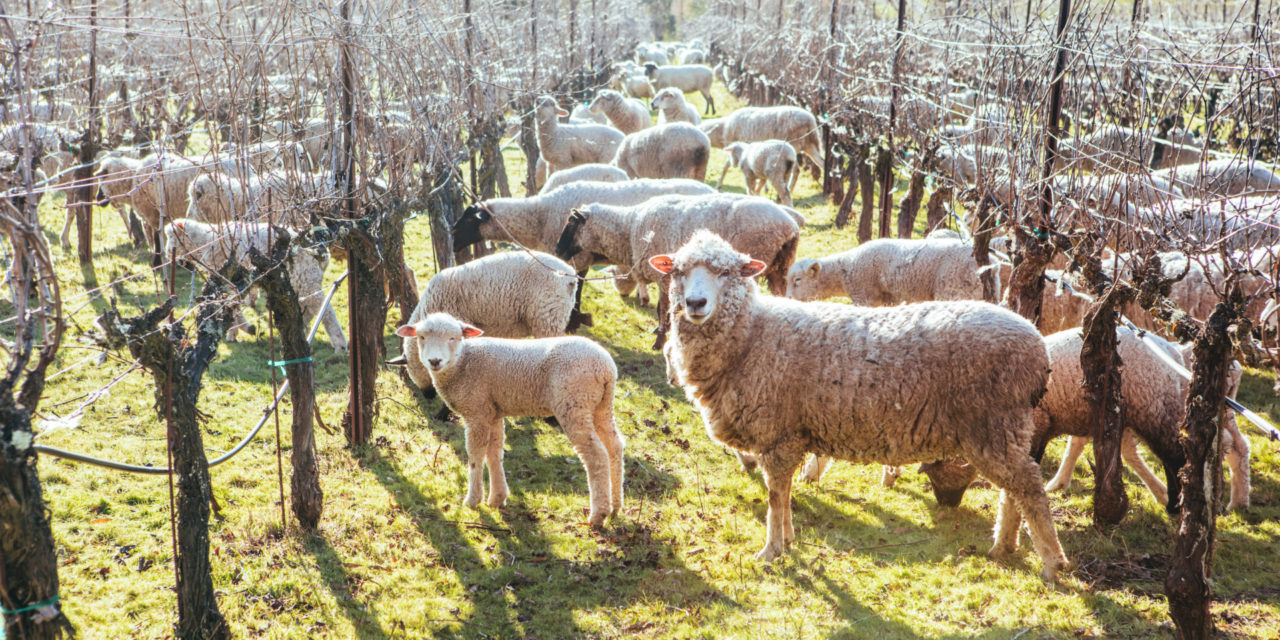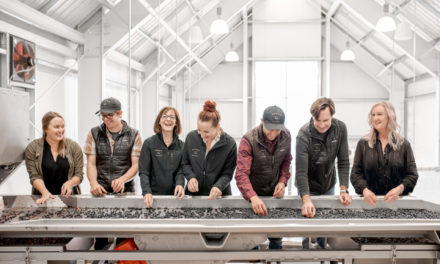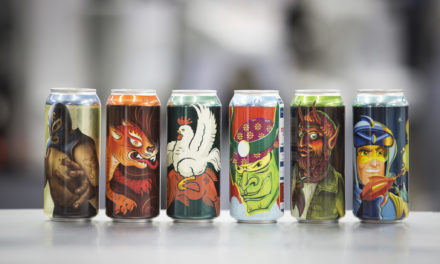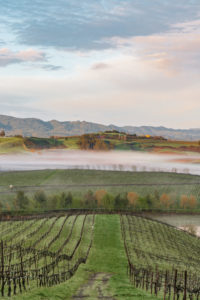
Gust vineyard [Courtesy Cline Family Cellars]
If you’ve not yet been to the California Mission Museum on the grounds of Cline Vineyards in Carneros, one gander around at the carefully preserved scale model displays of California’s 21 missions, rendered for the California Pacific Exhibition in 1939, will help you understand the family’s ethos.
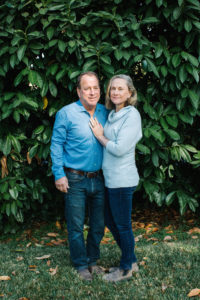
Fred and Nancy Cline [Courtesy Cline Family Cellars]
Spirited: Tell us a little about your wine backgrounds and philosophy. When did you start working at Cline and what is your current position?
MC: My sister, Hilary, and I have been involved with the family business our entire lives. We worked at Cline throughout high school and, during college summers, we would come back to work in the tasting rooms. I got more involved in the world of wine while attending school in Santa Barbara, where I completed my sommelier certification. Hilary has worked harvest at a number of different wineries both on the viticulture side as well as in the cellar.
We both came back to work full-time at Cline in 2015. We each wear a number of different hats, as you do in a family business—everything from sales, operations, winemaking, vineyard management, hospitality, and any other odd job that comes our way.
Spirited: Who’s currently on the winemaking team at Cline? How do you divide up responsibilities for the various lines of wine in the portfolio? For example, who makes Farmhouse? Sonoma Series? Single Vineyard Series?
MC: Tom Gendall and Charlie Tsegeltos head up the winemaking team at Cline, but Hilary and I are a huge part of guiding and developing the Cline style. We’re in the vineyards every harvest, sampling grapes, helping make pick calls, and helping with anything needed in the cellar. We’re more heavily involved in making wines in the terracotta amphorae and working on our own new project on the side. Hilary, Tom, and I are also starting a new label that pays homage to the Petaluma Gap that will be separate from Cline. (Note: The new label is called Gust and features a pinot noir and chardonnay made from Cline Family vineyards in the Petaluma Gap.)
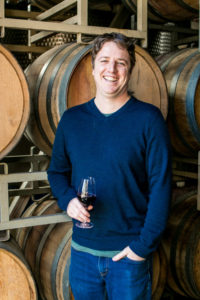
Tom Gendall [Courtesy Cline Family Cellars]
Charlie and I work together on all the wines, but we definitely concentrate on our own areas, his being Farmhouse, Cashmere, the Ancient Vines Series, the Appellation Series and the Single Vineyards; I focus on the Sonoma Series, Jacuzzi, Amphorae, and [Gust]. But with a wealth of expertise and talent, we all help each other at every stage.
Spirited: The Sonoma Coast is definitely getting a lot of airplay lately. What is it about the Petaluma Gap in particular that excites you?
MC: The Petaluma Gap is such an exciting new AVA. The wind and fog really set it apart from any other growing region. The wind plays a huge role in regulating the acidity of the grapes—sustaining freshness, while also thickening the grape skins, intensifying flavors and slowing the ripening. You end up with incredible wines that are lively and fresh while still having a depth and concentration of flavor.
TG: The quality of the wines also speak for themselves with stunning pinot noir, chardonnay and syrah headlining, but a lot of other great varietals are starting to shine, too.
Spirited: How is the Petaluma Gap distinctly different from Carneros? How do pinot noir and chardonnay grown in both differ, from a ripening standpoint and flavor profile?
MC: The Petaluma Gap AVA is noticeably cooler and grapes ripen quite a bit later than our Carneros fruit.
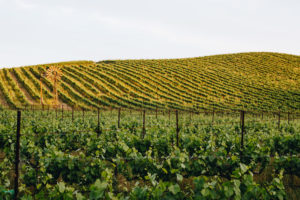
[Courtesy Cline Family Cellars]
Spirited: In 2019, for example, when did you pick pinot from Carneros? Petaluma Gap? How do you approach winemaking for each? Cold soak, fermentation temperatures? Yeast choices? Do you choose different cooperage?
TG: Most of our Carneros pinot noir goes into our sparkling program. However, we did make some still wine in 2019. It was harvested on September 27, at the riper end of the spectrum. In the Petaluma Gap, we started picking pinot on the September 28 and our last pick was October 15. Typically from Carneros, we want bigger riper fruits with plush tannins to make a very California-esque pinot noir.
In the Petaluma Gap, we can get more nuances and character, showcasing our different sites and the earthy complexity that comes along with that. We generally like two weeks on skins and we play around with whole cluster on the Petaluma Gap fruit to enhance the savory aspects. We tend to be a little more aggressive with cap management on Carneros fruit to help polymerize tannin chains to give a richer mouth feel along with higher ferment temps.
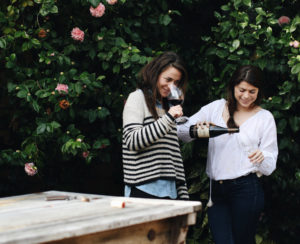
Megan and Hilary Cline [Courtesy Cline Family Cellars]
MC: We grow 100 percent of our pinot gris—about 75 acres total—with 85 percent of that coming from the Petaluma Gap. Those 75 acres are divided among four vineyards: Five Sisters, Catapult, Diamond Pile, and Lazy M.
We try and emulate an Alsatian style of pinot gris. We like to keep bright acidity, which is easy to achieve with Petaluma Gap fruit, and we like to have a bit bigger body and mouthfeel, really focusing on texture. We’re aiming for depth and complexity and enjoyability!
Spirited: Are you experimenting with clay or egg ferments for pinot gris or chardonnay?
MC: We have 15 terracotta amphorae that hold about 180 gallons each, and one cement egg. We’ve done a lot of experimenting. With amphorae in particular, we’ve tried a number different varieties including pinot gris and chardonnay but we’ve also tried viognier, pinot noir, grenache, syrah, sangiovese, nebbiolo, and merlot. We were actually most surprised by the viognier in terracotta; to us that was the most expressive in the clay.
We’ve also been playing around with different skin contact percentages and time left on skins for the white wines made in Amphorae. The pinot gris really ended up being more of an orange wine. We’ve loved making these wines. it’s been an amazing learning experience.
Spirited: How are the two wines in the Amphorae series being received by consumers?
MC: The wines made in amphorae are really well received. It makes a huge difference when we can show people the amphorae vessels and really give them a back story. People find it so cool that we’re using this old technique that a lot of people may have never heard of.
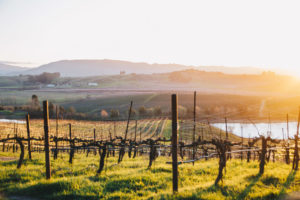
[Courtesy Cline Family Cellars]
MC: We’ve learned quite a bit about temperature regulation in the amphorae. White wines tend to ferment at a higher temperature, blowing off some of the primary fruit but leaving a more mineral and secondary aroma. The reds tend to ferment at a lower temperature than normal, so you preserve more of the freshness and brightness in the wines. In both red and the white wines, we’ve found a wonderful salinity and salty character, as well as extremely texturally driven wines. That’s the style we aim for now in any of the amphorae wines we make.
Spirited: Any plans to expand the Amphorae series?
MC: We have some really exciting plans for the Amphorae. We’ve actually moved the program to our sister winery, Jacuzzi Family Vineyards, which focuses on more obscure Italian varieties. We were first inspired to purchase and make wine in amphorae because of our connection to an Italian winery, and Jacuzzi seemed like a perfect fit to honor that Italian connection.
Spirited: Tell us about the Five Sisters Vineyard: how it came to be, what’s planted there, and why it’s special.
MC: The Five Sisters Vineyard is the Cline estate vineyard, where our tasting room and winemaking facilities are located. My parents, Fred and Nancy, purchased the ranch in 1989 when it was all farmland. They decided to plant 17 different varieties on the property. That’s one of the most special parts about the vineyard: It shows you how diverse the Carneros region can be. Varieties planted are barbera, cabernet franc, cabernet sauvignon, chardonnay, gewürtztraminer, grenache, malbec, marsanne, merlot, nebbiolo, petite verdot, pinot gris, pinot noir, riesling, sangiovese, syrah, viognier.
Spirited: What’s the best wine you’ve made from Five Sisters thus far?
MC: I would say our most iconic wine from the Cline Five Sisters Vineyard is our Los Carneros Syrah. When my father first planted the vineyard, he was told syrah would never get ripe in Carneros, because it was too cool. Since we first produced this syrah as a single bottling, it’s been a wonderful example of a delicious, riper style made from a cooler growing region. It’s full of bacon fat and black pepper, but it has generous fruit and a great body.
Spirited: What’s planted at Catapult? Diamond Pile? Lazy M? To what do their names refer? How many acres in each ranch?
MC: We have a number of different varietals planted at Catapult, Lazy M, and Diamond Pile vineyards, including chardonnay, malbec, merlot, nebbiolo, pinot gris, pinot noir, roussanne, sangiovese, syrah, viognier, pinot blanc, and gewürztraminer.
The name Catapult refers to a wooden catapult that lives on the vineyard. My older brother, Ramsey, built it as a gift for my younger brother, Henry—he used it to launch watermelons! It’s become our landmark there. The vineyard has 330 acres planted.
Diamond Pile vineyard (210 acres) references what we jokingly refer to as my dad’s hoarding habits, which are really, actually, amazing sustainability instincts. To him, old tractors, fruit crates, steel pipes, and whatever else you can think of, represent “diamonds in the rough” and are kept on the site. Before he buys anything new, he goes there first to sort through the piles and see what might come in handy. When we first planted the Diamond Pile vineyard, he used old steel pipes that were left on the property as end posts for the vineyard. It really refers to our goal of making sure we aren’t being wasteful and the philosophy we use in every part of doing business. It is 210 acres planted.
The third vineyard in Petaluma Gap, the Lazy M vineyard (100 acres planted), is entirely planted on its own rootstock, head trained, and for the most part dry-farmed.
Spirited: Tell us about your Single Vineyard series. Is this portfolio growing?
MC: Our Single Vineyard portfolio takes the best growing sites we have to offer from both our vineyards in Contra Costa County and our Sonoma vineyards. We do have plans to add a reserve pinot noir and chardonnay to our portfolio to highlight some of our amazing Petaluma Gap vineyards. Other than that, there areno plans to expand case production. We like to keep these programs small and special.
Spirited: Do you find consumers resonate with Single Vineyard wines? Will they pay more for them?
MC: I think consumers definitely resonate with single vineyard wines and understand that, with the extra care and attention given these wines, there’s a higher price tag.
A lot of our single vineyard wines are also very constrained by the amount of fruit the vineyard produces. Our oldest sites, from our more than 100-year-old vineyard from Contra Costa, usually can’t produce very much fruit. So many of our single vineyard wines are of limited availability.

